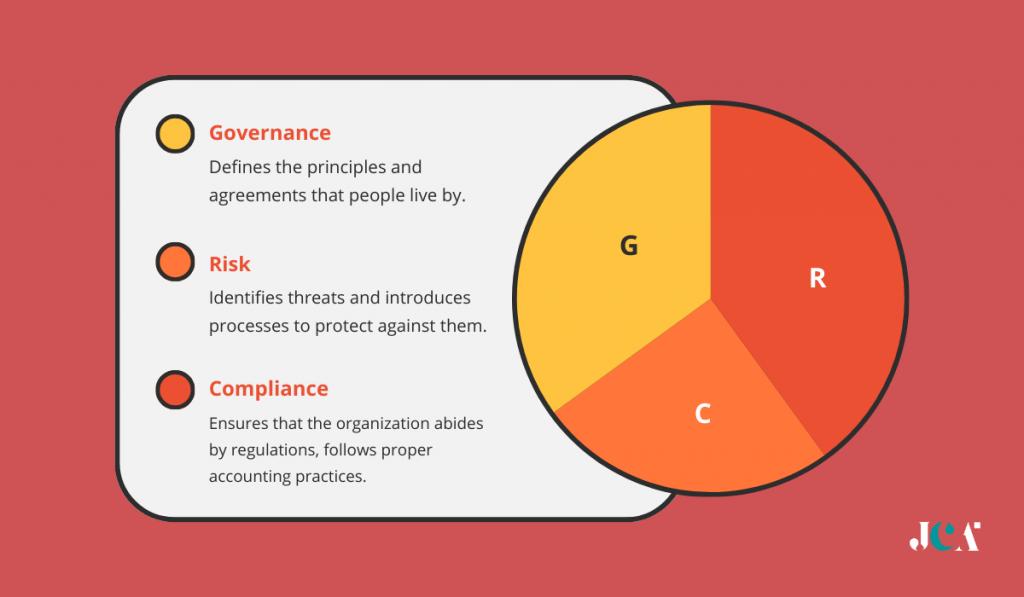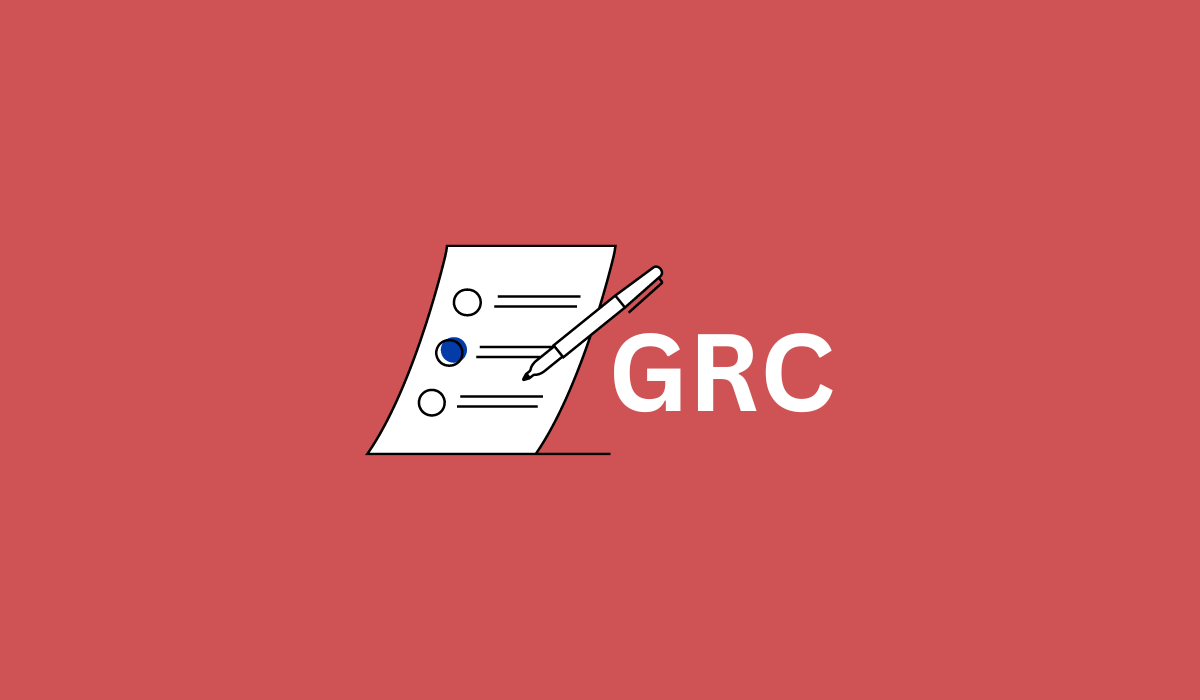Governance, Risk, and Compliance (GRC) processes are critical frameworks implemented within organizations to ensure alignment with regulations, manage risks effectively, and uphold ethical standards. Leveraging technology, such as GRC software and automation tools, can significantly enhance these processes, making them more streamlined and effective.

Why is Optimizing GRC Necessary?
Optimizing GRC processes is crucial in today’s business landscape for several reasons:
Regulatory Complexity
Regulatory environments are becoming increasingly complex and stringent across industries and geographies. Organizations need robust GRC processes to stay compliant with evolving regulations and avoid costly penalties.
Risk Landscape
The business landscape is fraught with various risks, including cybersecurity threats, geopolitical uncertainties, supply chain disruptions, and financial market volatility. Optimized GRC processes help organizations anticipate, assess, and mitigate these risks effectively, safeguarding their operations and reputation.
Operational Efficiency
Streamlining GRC processes enhances operational efficiency by reducing duplication of efforts, minimizing manual tasks, and automating compliance monitoring and reporting. This allows organizations to allocate resources more strategically and focus on value-adding activities.
Reputation Management
Non-compliance with regulations or failure to manage risks can damage an organization’s reputation and erode stakeholder trust. By optimizing GRC processes, organizations demonstrate their commitment to ethical conduct, transparency, and accountability, thereby safeguarding their reputation and brand value.
Competitive Advantage
Implementing robust GRC processes can differentiate organizations from their competitors by fostering trust among customers, investors, and partners. It signals to stakeholders that the organization is well-governed, resilient to risks, and committed to compliance, thereby enhancing its competitiveness in the market.
Also read: Best Practices to Ensure DORA Compliance for Banks and Credit Unions
How can Technology Optimize GRC Processes?
Here’s a detailed look at how technology can optimize GRC processes:
Automation
Technology enables the automation of repetitive tasks such as data collection, analysis, and reporting, reducing manual effort and minimizing errors. Automated workflows can improve process efficiency and ensure consistency across GRC activities.
Centralized Data Management
GRC software provides centralized data management capabilities, allowing organizations to store, track, and analyze governance, risk, and compliance-related information in a unified platform. This ensures data integrity, improves accessibility, and facilitates informed decision-making.
Real-time Monitoring and Reporting:
Technology-driven GRC solutions offer real-time monitoring of compliance requirements and risk indicators, enabling organizations to identify issues promptly and take proactive measures. Automated reporting tools generate comprehensive reports, providing insights into GRC performance and facilitating regulatory compliance.
Compliance Monitoring and Reporting
GRC technology facilitates continuous monitoring of compliance requirements, ensuring that organizations stay abreast of regulatory changes and obligations. Automated reporting functionalities streamline compliance reporting processes, enabling organizations to demonstrate adherence to regulatory standards efficiently.
Risk Assessment and Management
GRC tools provide advanced capabilities for identifying, assessing, and mitigating risks. Through automation and analytics, organizations can prioritize risks effectively, implement appropriate controls, and monitor risk indicators in real time. While knowing all this you must know the way to Integrate Advanced Risk Management Strategies in Software Engineering.
Integration Capabilities
GRC technology integrates with other enterprise systems, such as ERP and CRM platforms, enhancing visibility and data exchange across different business functions. Seamless integration ensures consistency in data management and enables organizations to leverage existing infrastructure investments.
Scalability and Flexibility
Modern GRC solutions are scalable and adaptable to evolving regulatory requirements and organizational needs. Cloud-based GRC platforms offer scalability, allowing organizations to adjust resources based on demand and accommodate growth without significant infrastructure investments.
Also read: 7 Must-Know Cybersecurity Compliance Standards for Businesses
How to Implement GRC Technology Solutions?
Implementing Governance, Risk Management, and Compliance (GRC) technology solutions is vital for businesses today. It helps manage risks, comply with laws, and improve decision-making. Here’s a step-by-step guide to do it successfully.
Step 1: Assess Current GRC Processes
First, understand your current GRC processes. Identify what works and what doesn’t. This step is key to knowing what you need to improve.
Step 2: Select the Right Tools
Choosing the right GRC tools is crucial. Look for tools that fit your business needs. Consider factors like cost, features, and ease of use.
Step 3: Train Employees
Once you have your tools, train your employees on how to use them. Make sure everyone understands their role in GRC processes. Good training helps everyone use the tools effectively.
Step 4: Implement in Phases
Don’t rush the implementation. Do it in phases. Start with the most critical areas. This approach helps you manage changes better.
Step 5: Test the System
Before going full scale, test the system. Check if it meets your needs. Fix any issues that arise during testing.
Step 6: Go Live and Monitor
After testing, go live. But, keep monitoring the system. Look for ways to improve. Regular checks ensure the system stays relevant and useful.
Step 7: Scale and Customize
Lastly, think about the future. Choose tools that can grow with your business. The ability to customize the tools is also important. This ensures they will always meet your changing needs.
By following these steps, businesses can ensure a successful implementation. This will help manage risks better, comply with laws, and make smarter decisions.
Also read: The Human Factor: Training and Culture in Cybersecurity
Final Shot
Optimizing GRC processes with technology is imperative in today’s business landscape. By embracing automation, centralizing data management, and utilizing real-time monitoring, organizations can enhance efficiency, strengthen reputation, and gain a competitive edge. The scalability and flexibility of modern GRC solutions ensure adaptability to evolving regulations and business needs. Embracing technological advancements isn’t just strategic; it’s essential for organizations aiming to thrive in a complex and interconnected world.










Leave a Reply